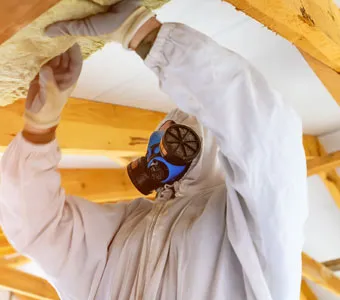Today’s far-reaching asbestos exposure
Today’s far-reaching asbestos exposure
Many people typically associate asbestos exposure with industrial trades. Over the past few decades, news and other media outlets have highlighted the health risks for employees working in these fields.
Unfortunately, exposure to asbestos fibers isn’t just limited to past employees working in Navy shipyards, plants or factory settings. Asbestos is found in many other areas, like schools, hospitals and public buildings.
And, despite the prohibition against today’s use of the substance, it’s still affecting people as we speak-including kids.
Case-in-point
One parent of a child attending an elementary school in the state of Alabama was recently profiled in the media. The instance offers a modern-day case-in-point about how the issue is still a problem even today.
The mother discovered that the school her children were attending was latent with asbestos. Having been built in the 1920s, this was not an uncommon situation. The school reassured her, however, that air tests revealed no immediate danger, a plausible explanation given that asbestos fibers are typically harmless if they are not damaged or disturbed.
However, she wasn’t convinced. She found out that school officials had blocked off the school library from access. If they were so certain the exposure wasn’t harmful to her children and others, why did they feel the need to seal off the so-called undisturbed areas that contained the substance?
She further learned that, according to EPA documentation, school officials had also failed to “integrate a plan of training, cleaning, work practices, and surveillance” to ensure that the asbestos materials still in the building were continuously scrutinized. The EPA also indicated that, pursuant to recommendations, officials were not informing parents, teachers and school workers about the presence of asbestos throughout the building.
Sadly, the situation involving this particular school isn’t a rarity. Many other older schools constructed with asbestos building materials still fully operate today all across the country.
And so do many hospitals and police stations.
Another instance
In one instance, a mechanical contractor discovered asbestos all throughout the ceiling plaster of a Connecticut police station in May 2014.
The Occupational Safety and Health Administration fined the city for failing to adhere to several federal safety rules. Similar to the actions of school officials in Alabama, one citation was for a failure to inform janitors, contractors and other employees about the presence of the substance and its increased health risks. Roughly 300 workers who came into frequent contact with the substance at the station have filed lawsuits since the discovery.
Although asbestos has been completely banned in the U.S. and is no longer used in construction materials for new 21st century projects, it’s evident that it is still wreaking havoc and taking unnecessary lives.
Today’s data shows that about 3,000 people every single year in the U.S. contract terminal mesothelioma due to exposure from the substance.







